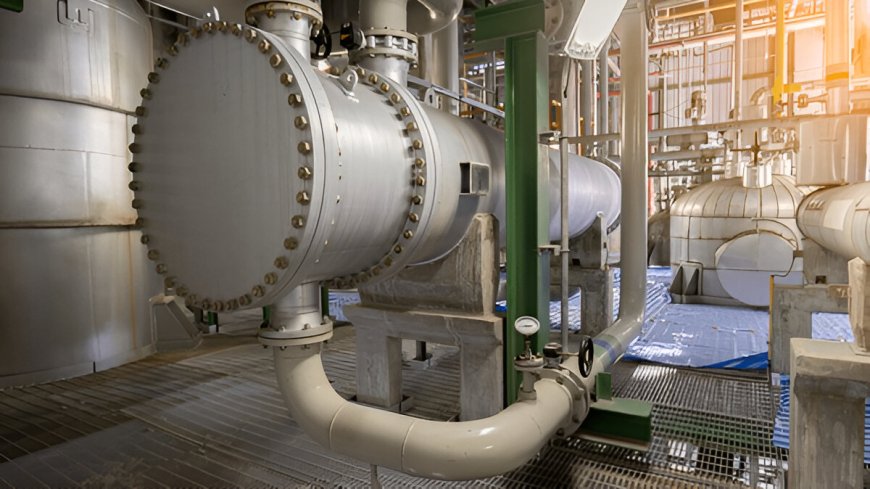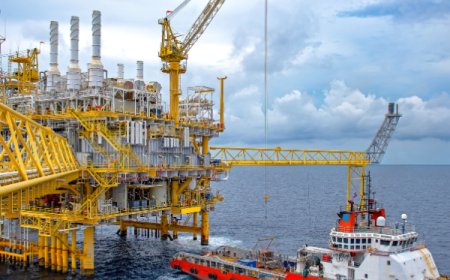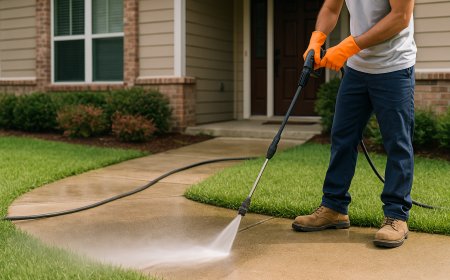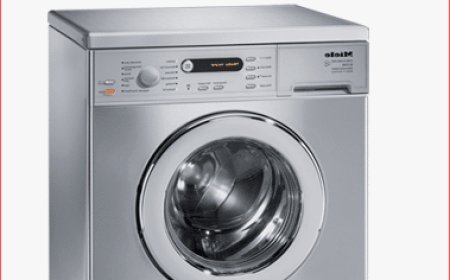Top Benefits of Using an Oil Water Separator in Industrial Settings
Oil water separators are essential pieces of equipment that remove free-floating and emulsified oil from water, preventing harmful contaminants from entering the environment.

Have you ever wondered how industrial sites manage to separate oil from water effectively? Are you curious about the technology behind coalescer oil water separators and how they help industrial facilities stay compliant with strict regulations? If you’ve been asking questions like these, you’re in the right place.
In this blog post, we’ll explore the basics of oil water separators, from common industry terms—like “oil separator plate” and “oil water coalescer”—to the latest innovations in Australia. You’ll discover why local industries rely on advanced oil water separator systems, how these solutions help businesses protect waterways and cut costs, and the best ways to select and maintain your own workshop oil water separator.
By the time you finish reading, you’ll have a thorough understanding of how an oil water separator works, which types are most suitable for different industries, and why these systems are crucial for environmental protection. So, let’s dive straight in and uncover the top benefits of deploying an oil water separator in your operations.
Introduction to Oil Water Separators
Oil water separators are essential pieces of equipment that remove free-floating and emulsified oil from water, preventing harmful contaminants from entering the environment. They’re commonly found in industrial and workshop settings where large volumes of oily wastewater are generated. The basic idea is simple: separate the oil from water, so that the water can be discharged or reused safely.
What Is an Oil Water Separator
An oil water separator is a system designed to isolate and remove oil droplets from water. This process often involves innovative components like coalescing media or plates, which encourage tiny oil droplets to combine into bigger droplets. Once these droplets are large enough, they float to the surface for easy collection. Coalescer oil water separators are particularly useful for handling mixtures that contain both oil and solid debris, ensuring effective treatment in many industrial scenarios.
Common Terms Explained: “coalescer oil water separator,” “oil coalescer water oil separator,” and “oil water coalescer”
If you’ve spent any time researching these systems, you might have spotted various overlapping terms. A “coalescer oil water separator” or “oil coalescer water oil separator” refers to equipment that uses coalescing technology to help oil droplets come together. Meanwhile, “oil water coalescer” typically describes the specific coalescing unit or media within the separator. Essentially, these terms all point to technology that aids in separating oil from water quickly and efficiently.
The Role of Oil Separator Plates and Coalescing Plate Separators
Separating oil from water requires more than just a simple settling tank. Modern systems rely on carefully engineered plates and media that improve efficiency and lower the footprint of the equipment. Oil separator plates are key to managing contaminants in a compact and reliable way.
Understanding “oil separator plate” Technology
An oil separator plate creates a larger surface area for oil droplets to catch onto. In older systems, water would sit in lengthy settling tanks until oil rose to the top. Today, advanced plates allow for a much quicker process. These plates guide the flow of wastewater and shift smaller droplets into contact with each other, so they merge and form larger droplets. The larger the droplet, the easier it is to separate from the water stream. This design makes the separator smaller and more efficient.
How a “coalescing plate separator” Works in Industrial Settings
A coalescing plate separator uses rows of angled plates, where the wastewater flows through in a controlled manner. As water traverses this specially designed space, oil droplets adhere to the plates or collide with one another, coalescing into bigger masses that rise to the surface. This setup is particularly valuable for busy industrial sites with high flow rates. Because these separators work quietly in the background, they help ensure that your operations stay compliant and efficient. By the end, you have cleaner water exiting the system and less oil residue piling up.
Why Should You Use an Oil Water Separator in Australia?
Australia stands out for its strict environmental policies. Workshops, manufacturing facilities, and heavy industry sites across the country must comply with regulations designed to protect the continent’s precious ecosystems. One of the smartest ways to do this is by installing an oil water separator.
Environmental Regulations and Compliance in Australia
Australia’s environmental guidelines require businesses to manage wastewater responsibly. If your site generates oily wastewater, a reliable oil water separator australia solution protects both the environment and your company’s reputation. Not only will proper filtration prevent penalties, but it can also pave the way for improved standing with local communities. Keeping water sources clean and preventing harmful discharge are key priorities in a nation home to diverse marine habitats and sensitive inland waterways.
Cost-Saving and Efficiency Benefits
Beyond environmental obligations, oil water separators can save you a significant sum of money. By removing oil from water, you lower disposal fees and reduce the need for complex wastewater treatment. Additionally, reclaimed oil can sometimes be repurposed, adding to your bottom line. Investing in advanced oil water separator systems or a workshop oil water separator often pays for itself within a few years, thanks to fewer violations, lower maintenance costs, and improved site productivity.
Importance of “oil water separator australia” for Local Industries
From mining to automotive workshops, oil water separators are indispensable across many Australian sectors. Industries dealing with hydraulic machinery or motor maintenance regularly use these systems to maintain safe, clean operations. Furthermore, some states have specific guidelines that require even smaller workshops to put an efficient separator in place. In such a setting, “oil water separator Australia” becomes more than a keyword it's a practical necessity for running a clean and responsible operation.
Types of Oil Water Separators
Not all oil water separators are created equal. If you need to find a solution that aligns with your workflow, budget, and local regulations, it’s helpful to know about the popular types on the market. From small workshop oil water separators to large industrial installations, there are options for just about everyone.
Exploring “workshop oil water separator” Solutions
A workshop oil water separator is typically a compact, easy-to-maintain unit designed for smaller volumes of wastewater. It’s well-suited to automotive repair shops, vehicle wash bays, and small-scale industrial facilities. These separators often include oil separator plates or coalescing media to capture oil and grit, ensuring your water is cleaner before it’s discharged. Given the tighter space constraints in many workshops, these systems are usually designed with space-saving arrangements and simpler cleaning routines.
Key Components, Including the “oil separator pump”
No matter the size, every oil water separator has certain essential parts. One of these is the oil separator pump, which helps move wastewater through the treatment stages or pumps separated oil out of the system. In coalescer oil water separators, you’ll also find sets of coalescing plates or packs that accelerate droplet build-up. And, of course, an effluent chamber ensures water leaving the system meets discharge standards. Having a reliable pump and coalescing unit is crucial for consistent performance and minimal downtime.
Popular “oil water separator systems” and Their Features
Different industries prefer different systems. For instance, corrugated plate interceptors are common in large-scale processing plants that handle hefty water flows. Coalescing plate separators are well-liked by medium-sized facilities that need an effective yet space-friendly design. Meanwhile, parallel plate separators might be used in locations dealing with lighter oil loads. Many oil water separator systems also include control panels, alarms, or automated oil removal features to ensure smooth and safe operation—even when you’re not on-site to supervise.
Top Benefits of Implementing an Oil Water Separator
You might be wondering: Is this puzzle piece absolutely crucial for my operation? The short answer is yes. Here’s a closer look at some of the benefits you can expect when you install an oil coalescer water oil separator or a similar device at your facility.
Reducing Waste and Protecting Waterways
One of the main advantages of oil water separators is the ability to protect local ecosystems. Instead of sending oil-contaminated water into the sewer or environment, your operation captures the oil and disposes of it properly. By managing waste responsibly, your business takes a proactive stance in preserving Australia’s diverse marine life and inland water bodies. This helps maintain clean water resources for communities and ecosystems, reducing the strain on public water treatment systems.
Meeting Industry Standards and Guidelines
In many sectors, having a functioning oily water separator or coalescer is non-negotiable. Regulations often demand that wastewater meet strict concentration limits for oil or suspended solids. An effectively designed oil water coalescer ensures you hit those targets day in and day out. Meeting or exceeding these standards demonstrates professional responsibility, which can open doors to more prestigious contracts and partnerships. Clients often prefer suppliers who follow safe, dependable, and credible wastewater practices.
Improving Workplace Safety and Operations
Oil spills and leaks can create slippery conditions, putting your workforce at risk. With a workshop oil water separator, you minimise the chance of oil pooling on floors or seeping into equipment. This lowers the odds of accidents, keeping everyone more secure. On top of that, separating out oil means you have a cleaner, more orderly working environment. That’s bound to help overall productivity because employees won’t be battling messy spills or complicated clean-ups.
Selecting the Right Oil Water Separator Manufacturers
Picking the right manufacturer for an oil coalescer water oil separator or any other oil-water system can feel daunting. However, focusing on a few key criteria can help you narrow your options and find a partner that meets your industrial needs as well as your budget.
Evaluating Technical Capabilities and Experience
When weighing up oil water separator manufacturers, check whether they have a history of producing reliable systems. Bear in mind any manufacturer that’s been around for a while must have developed a fair bit of industry experience. Ask about past projects, request references, and see if their solutions have withstood the test of time. Companies with a solid portfolio usually have streamlined designs, making them simpler to install and maintain.
Comparing Costs, Warranties, and Maintenance Packages
It’s essential to think beyond the initial price tag. Look at warranties to see how long key parts—like the oil separator pump or coalescing plates—are covered. Also enquire about the availability of service plans, because consistent inspections and occasional component replacement can preserve your separator’s performance for years. A manufacturer that stands by its product and offers prompt support will save you headaches in the long run.
Installation and Maintenance Best Practices
Getting the right equipment is only half the battle. Correctly installing and maintaining your oil water coalescer is what keeps your operations running at peak performance. Following simple best practices helps ensure your system does its job effectively and remains compliant.
Proper Sizing for Different Industrial Operations
One of the most common errors when buying an oil water separator is choosing one that’s too small or too large. Make sure you factor in maximum flow rates, types of contaminants, and the layout of your space. If you’re uncertain, professional guidance can be invaluable especially if you handle variable loads or unusual contaminants. An undersized system can’t cope with peak flows, while an oversized unit might be more expensive, require more space, and still leave you with inefficient results.
Routine Inspections and Cleaning Schedules
Regular inspections prevent small issues from turning into costly repairs. Look for signs of wear, blockages, or irregular flow. Clean or replace coalescing plates before they become overwhelmed by sludge. Set up a precise cleaning schedule consistent with your production volumes, and document each service to track the health of your separator. A reliable approach might include monthly water-quality checks, quarterly deep cleans, and annual overhauls.
Troubleshooting Common Issues with an Oil Water Coalescer
Even the most advanced workshop oil water separator can face hiccups. Restricted flow, oil collecting in the wrong chamber, or strange odours might indicate blockages or damaged parts. If you notice water isn’t exiting as clean as before, check whether the coalescing plates are clogged or if the pump is under strain. Acting fast is essential; the quicker you identify and fix issues, the less downtime and expense you’ll rack up.
Real-Life Applications and Success Stories
By now, you have a good sense of how crucial an oil water separator can be. But let’s take a closer look at real-world illustrations. Across Australia, many industries have implemented well-chosen systems and reaped significant benefits for both operations and the environment.
Australian Industries Benefitting from a “workshop oil water separator”
Car dealerships, bus depots, and light engineering workshops across the country are known to use compact separators to handle oily wastewater from cleaning and maintenance activities. By installing a workshop oil water separator, they keep discharge oil levels far below regulatory limits. These smaller systems are budget-friendly, too, so they suit businesses of all sizes—from family-owned garages to multi-site repair chains.
Environmental Sustainability Achievements
Larger-scale projects, such as mining or manufacturing plants, often adopt elaborate oil water separator systems to tackle huge volumes of wastewater daily. Thanks to advanced coalescing plate separator designs, these facilities significantly decrease the release of harmful pollutants. Some companies have even been recognised with environmental awards for their efforts, showcasing how forward-thinking water treatment can become a cornerstone of corporate social responsibility.
Innovations and Future Trends
Looking ahead, oil water separators continue to evolve. Researchers are developing more efficient coalescing materials that handle complex oil mixtures, including synthetic lubricants. Automated monitoring systems that send alerts when plates need a clean or when discharge quality deteriorates are also growing in popularity. These innovations make achieving compliance simpler and more seamless, saving both time and money while boosting environmental protection.
Conclusion
Summing up, adopting an oil water separator is absolutely key for any industrial operation that deals with oily wastewater. Not only do these systems prevent contaminants from polluting Australia’s waterways, they also save you money by reducing fines and enabling you to recycle water. Whether you’re running a bustling workshop or a large-scale manufacturing facility, an oil water coalescer ensures you’re fulfilling essential environmental standards and maintaining a safe, tidy workspace.
By understanding the different types of oil separator plates, coalescing plate separators, and pumps available, you can tailor a system to your specific requirements. Make sure you size it correctly, schedule regular inspections, and partner with oil water separator manufacturers who will stand by their product. If you do all this, you’ll not only safeguard your business against legal and environmental issues, but also build a more efficient operation overall.
Ultimately, investing in the right oil water separator brings ongoing value. Clean waterways, safer working conditions, and compliance with Australian regulations all point to a more sustainable future for you, your workforce, and the environment. With modern technology and proper upkeep, you can rest assured your separator will perform for years to come, offering peace of mind and a greener footprint across your industrial operations.









































